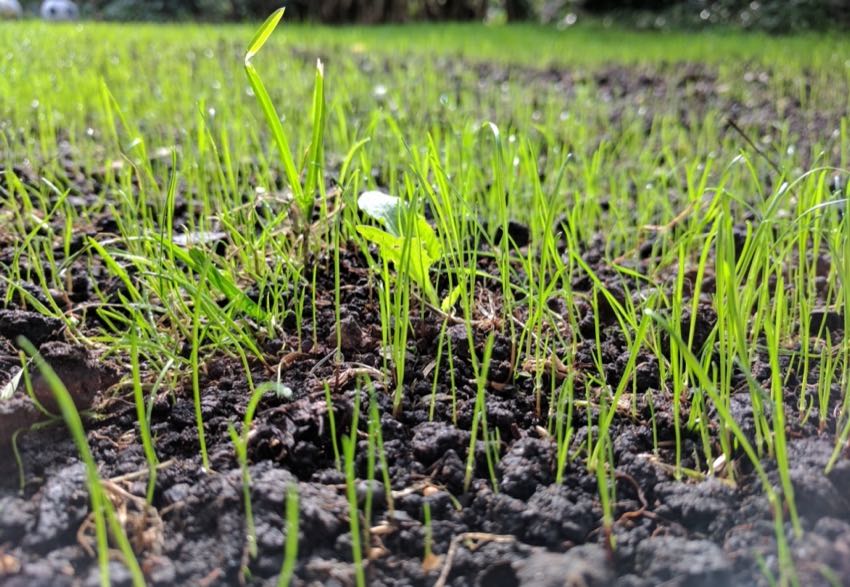Patching Your Lawn is Easy with These Steps
Perhaps the entirety of your lawn isn’t necessarily subject to various forms of abuse, but it’s likely that at least parts of it have seen better days. Standing water, drought, foot traffic, pets, heavy equipment usage, and any number of other scenarios can beat up sections of an otherwise healthy lawn. But, with minimal time, effort, and material, you can inject life and beauty back into your lawn. Here’s how to patch your lawn with seed to get it back in shape.
What You’ll Need
Patching your lawn is relatively simple, and it won’t require a whole lot in terms of tools and materials. You’ll need a shovel, a hand rake, and a landscaping rake. Depending on the size of the area being patched, your work might benefit from a fertilizer spreader and cultivator. A hose with a spray nozzle, or perhaps a sprinkler, comes in handy as well. These aid in the work at hand as well as keeping your new grass healthy as it grows in.
You’ll also need compost or manure to fertilize the area as well as seeds for sowing. For larger patches, you might opt for using sod to patch your lawn.
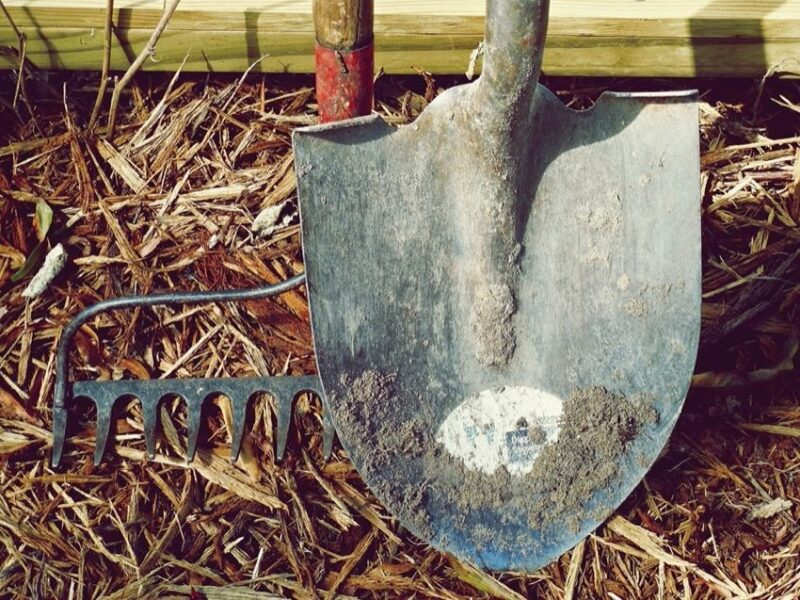
How to Prep and Patch Your Lawn
Before you actually get to patching your lawn, you’ll need to prepare the area. The first thing you’ll need to do is remove any weeds or damaged grass permeating the area. You’ll want to work past the problem spot and into the healthy grass, about 6 to 8 inches.
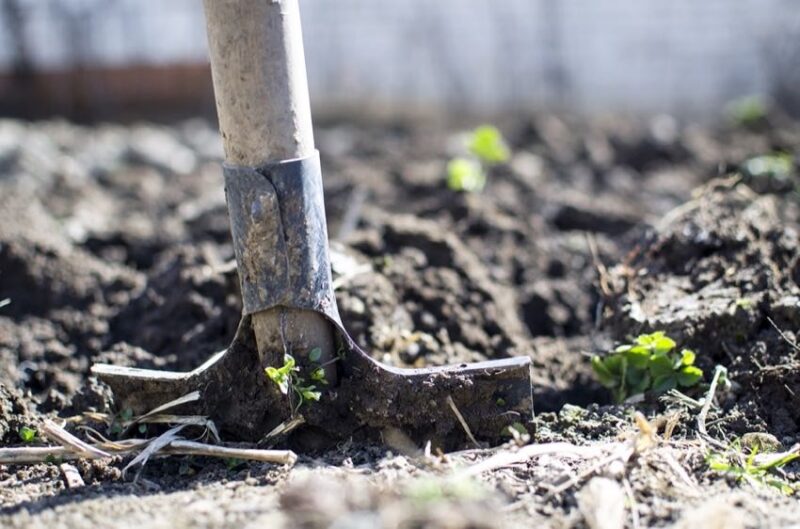
Next, remove any rocks or roots in the soil so that your seeds have a chance to grow good root systems. Turn the soil over to a depth of around 6 inches. You can use your hand rake for this. Of course, if you’ve got something like the EGO Power Head System, the cultivator attachment accomplishes the work quickly.
To ensure richer and healthier growth, consider adding a layer of compost, manure, or fertilizer to the area, mixing it into the soil well.
Smooth over the fresh soil with your landscaping rake, then lightly tamp the soil with your hands.
Sowing Season
When buying your new seed, look for the species that best matches your existing grass. Some products, like Scott’s EZ Seed , have your seed, fertilizer, and growing substance all premixed together. The seed supplier will have instructions and recommended sowing rates printed on the package.
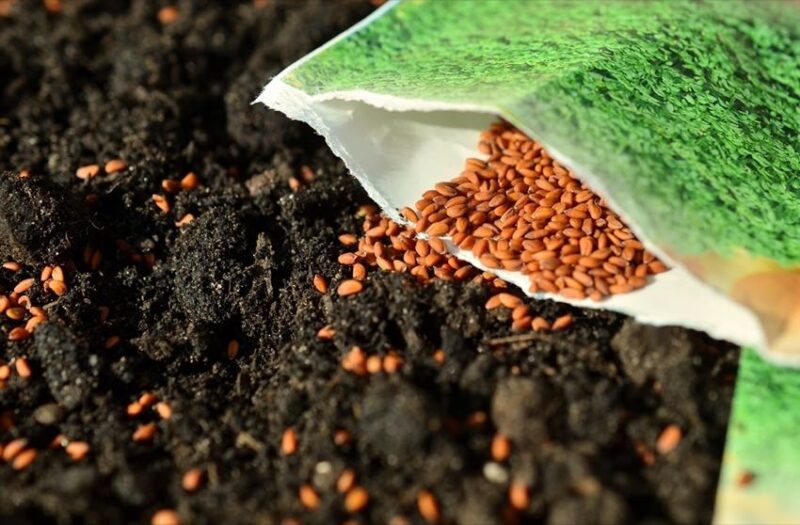
For smaller patches, you will probably just scatter the seedlings across the soil surface by hand. For larger areas, a lawn spreader could be your best bet for laying down a consistent application.
After this, you’ll use your rake to cover over the seeds, mixing it into the soil.
You should follow your seed supplier’s instructions, but it won’t hurt to cover the area with a light layer of wheat straw. That protects the seeds from birds and also acts as a layer of mulch to help keep moisture in the ground.
Consider Using Sod
Patching your lawn with sod works best for larger damaged areas. It requires the same prep as above with a few additions. When you get to sections that can’t handle a full rectangle of sod, simply cut the sod to fit the size and shape needed.
If you lay the sod without “cutting it in”, it may seem higher than the rest of your surrounding lawn. In this case, you’ll want to remove some of the soil underneath the patch, smooth out the ground, and reapply your sod patch. Pay attention to the edges as well where the sod blends back into your existing grass or turf.
When everything looks more or less even, walk gently across the area to tamp the sod patch down. This helps to make sure that the roots make good contact with the soil underneath.
Watering Your (New) Lawn
With the hard work of patching your lawn out of the way, the final step will be watering. Again, with seeds, you’ll look for specific instructions on the package. You’ll likely be advised to gently water your seed patch with the mist attachment of your sprayer, or with a gentle sprinkler.
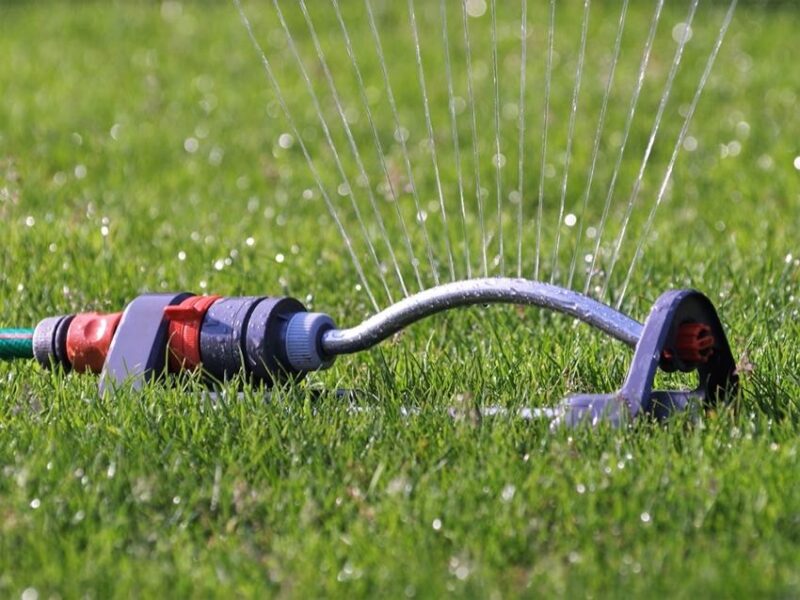
For sod, you’ll likely need a wider or larger sprayer to get enough water to the soil.
In both cases, you’ll want to soak the soil to a depth of around 4 inches. In the following days, and up until the point where your patch has been really established, you’ll water once or twice daily. Using a timer can help regulate the supply of water and help lower the workload as your new grass takes root.

